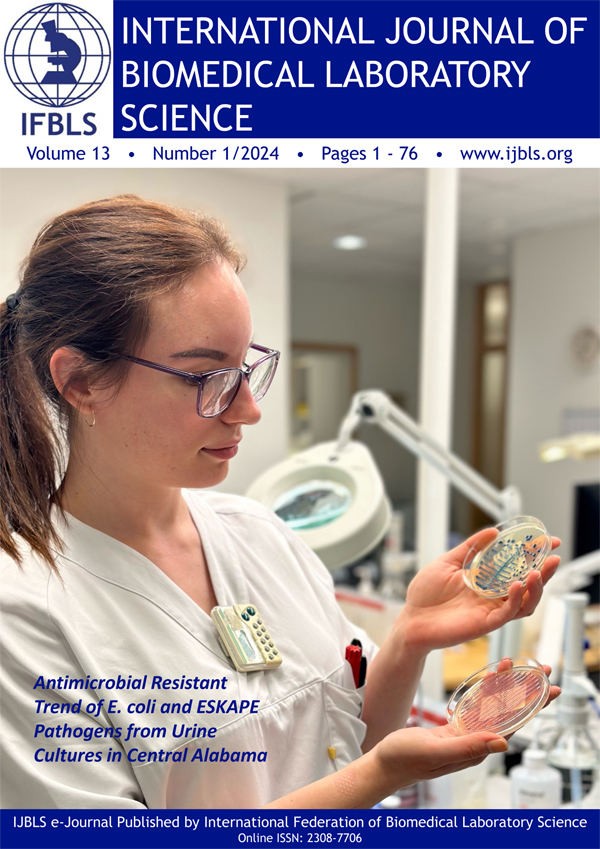Literature review - Primary Myelofibrosis
Michelle Butina, Nicola Richards, Indu Singh, Nichola H Lawrence
Int. J. Bio. Lab. Sci 2021(10)2:102-111【PDF】
Abstract
Primary myelofibrosis (PMF) is a Philadelphia negative myeloproliferative neoplasm characterized by bone marrow fibrosis, splenomegaly, anemia, constitutional symptoms, and extramedullary hematopoiesis. As a clonal hematopoietic stem cell disorder, it is often accompanied by a disease-initiating driver mutation and shortened survival. Diagnosis is often based on bone marrow findings. Diagnosis is supported by the presence of janus kinase 2 (JAK2), calreticulin (CALR), or thrombopoietin receptor protein (MPL) mutation, found in approximately 90% of patients. In 2016, the World Health Organization divided PMF into pre-fibrotic and overt categories to aid in distinguishing PMF from essential thrombocythemia. Several prognostic systems, using a variety of clinical and genetic features, have been developed to aid in therapeutic decision-making. Treatment focuses on alleviation of symptoms and an increase in overall survival. Treatment options have historically been limited. However, the therapeutic landscape is changing with the development of new JAK inhibitors.
Key words: Myelofibrosis, myeloproliferative neoplasm, prefibrotic myelofibrosis, primary myelofibrosis, overt myelofibrosis.


